Pests are by far the most frustrating part of keeping an organic home garden.
We do everything we can to produce healthy, happy plants. We build up our soil so it’s rich in nutrients. We feed our soil and our plants so they have everything they need. We mulch and water so the plants don’t get stressed.
Then a swarm of cucumber beetles shows up and wipes out most of our watermelon plants in a weekend (true story).
It’s enough to make us rip our hair out and throw in the towel.
What are we supposed to do? How are we supposed to compete with that and stay organic?
Let’s take a look at six strategies we can use for organic pest control.
Table of Contents
Pin this article for later:
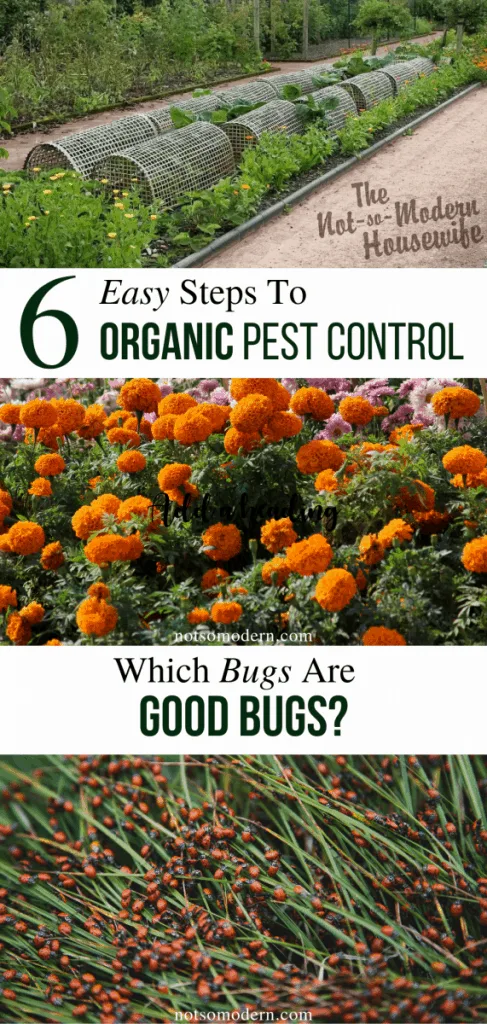
Know Your Bugs
The first step towards controlling garden pests organically is knowing what you’re dealing with. Learn to identify every bug you see in the garden.
The Google app has a wonderful search function that lets you take a picture and search for similar images. Narrow down your search by looking for insects and caterpillars that are common in your state. When in doubt, post a picture in a local gardening group on Facebook and ask for identification.
Not every bug in the garden is going to harm your plants. If you’ve created a healthy ecosystem in your garden, you’re likely to have as many good bugs as you do bad bugs.
We don’t want to do anything that could harm our good bugs. They are there to help us control the bad bugs.
Companion Planting
Companion planting has two uses when we’re managing insect pests in the garden.
There are plants that repel pests that should be planted with our vegetable plants. These include marigolds, nasturtiums, garlic, and basil.
Then there are plants that attract pests and should be planted away from our vegetable plants. These are called trap crops.
Different pests have different trap crops that they prefer.
For instance, cucumber beetles like Blue Hubbard Squash. Stink bugs like sunflowers.
Trap crops can help keep pesticides out of your vegetable garden. They attract the pest you’re trying to target so that you can spray the pesticide on that one plant instead of the rest of your vegetable plants. They are considered sacrificial plants.
Use Floating Row Covers
Floating row covers are made from anything that is fine enough to prevent pests from landing on and laying eggs on your vegetable plants.
Your row covers should cover the entire plant and reach to the ground. The material should allow light and rain to flow through to the plants. It should not trap heat which could kill your plants.
Because row covers prevent insects from landing on your plants, you will probably need to hand pollinate your vegetables. This can be a major drawback for gardeners because it makes gardening a little more time consuming.
Treat the Bad Bugs
When you do treat the bad bugs, you want to choose a control method that is specific to the pest you’re dealing with. Even in organic gardening, there are targeted controls and there are broad spectrum controls. Broad spectrum controls run the risk of harming your beneficial insects (including pollinators) as well as the bad bugs. This is counterproductive.
One targeted control is bacillus thuringiensis (Bt). It is a bacteria we can spray on plants that only affects caterpillars. It controls things like tomato hornworm, army worms, cucumber worms, and vine bores. The caterpillars eat a sprayed leaf and are poisoned by the bacteria spores.
Because it will effect all caterpillars, it should not be sprayed on herbs or other butterfly host plants.
Learn More: Bacillus thuringiensis
Options for other pests include more broad spectrum organic sprays like insecticidal soap, neem oil, pyrethrum, and Spinosad. Each works best on some bugs more than others, so research the sprays and choose the one that best targets the pest you’re dealing with.
These pest controls work best when sprayed directly onto the pest itself, so it’s important to identify what you are spraying first.
If the bug is big enough, you can also hand pick it from affected plants and drop it into a bucket of soapy water. I keep a bucket of soapy water in my garden at all times, and usually walk through once or twice a day. Bugs hide during the hottest part of the day, so it’s best to check early in the morning or just before dusk.
Encourage Good Bugs
There are a number of good bugs that can help automate your pest control efforts by eating the bad bugs and their larvae. These include preying mantis, ladybugs, and even wasps.
We can encourage beneficial insects to our gardens by providing plants that attract them as well as an environment that they enjoy and will reproduce in.
If your garden is lacking beneficial insects, or you want to give them a jump-start, you can also order some to release in your garden.
Arbico Organics offers a wide variety of beneficial insects and organisms. I’ve used them for years and have always been happy with their quality.
So when I had an aphid problem in my garden, I knew I wanted to order ladybugs from a company I can trust. The 9,000 ladybugs were affordable and arrived at our door within a couple of days.
Here is our ladybug release in the garden:
Understanding Organic Products
There’s the misconception that organic gardening should mean no fertilizer, no pesticides, and no fungicides.
Our vegetable plants need fertilizer. They need us to protect them from bugs and disease.
What they don’t need is artificial chemicals that kill the soil and every bug in sight.
While organic sprays may have chemical-sounding names, they are biological in nature and can be found naturally occurring.
They are not persistent, so will need to be applied at least once a week and after every rainfall.
Looking to connect with like minded people who are interested in gardening, traditional living, and being more self sufficient? Join our community on Facebook – Not so Modern Living.
Many gardeners have become frustrated and given up after trying to garden organically. It wasn’t from anything they did wrong, but they weren’t given the tools they needed to succeed.
You can successfully produce organic food for your family. It takes a little diligence, but it doesn’t have to be difficult.
What’s the worst pest you’ve struggled with in your garden? How have you managed it organically? Comment below and let me know.

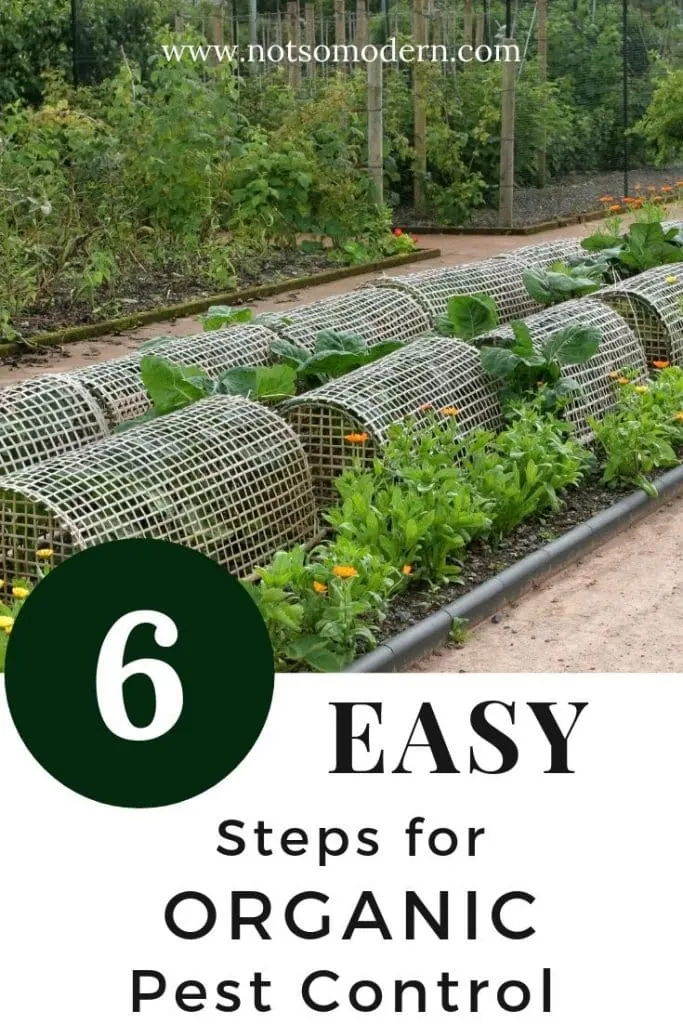
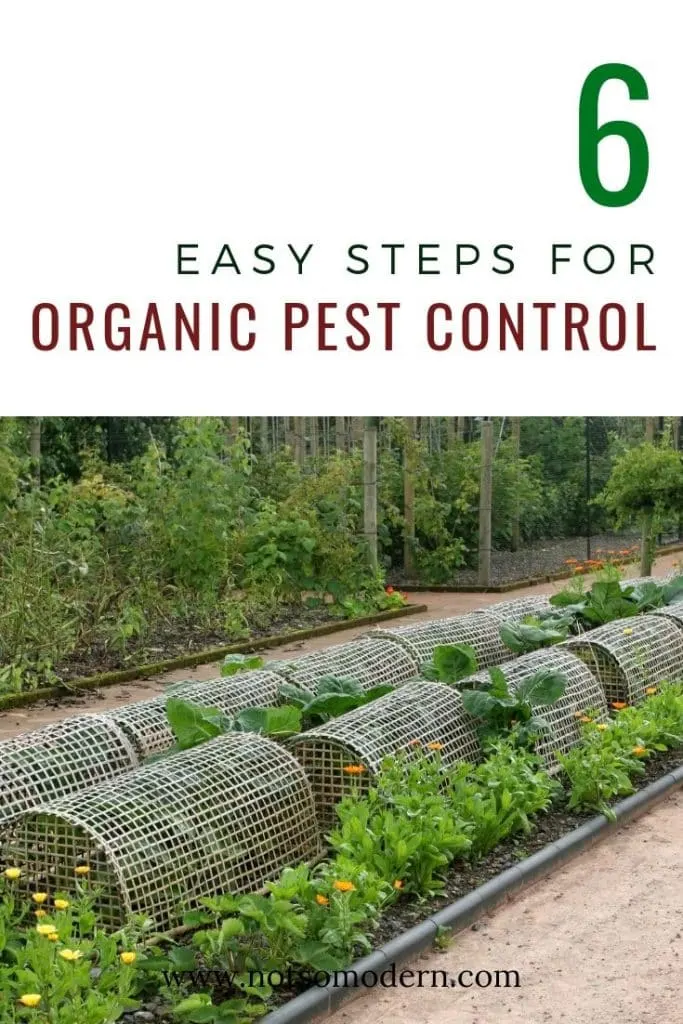
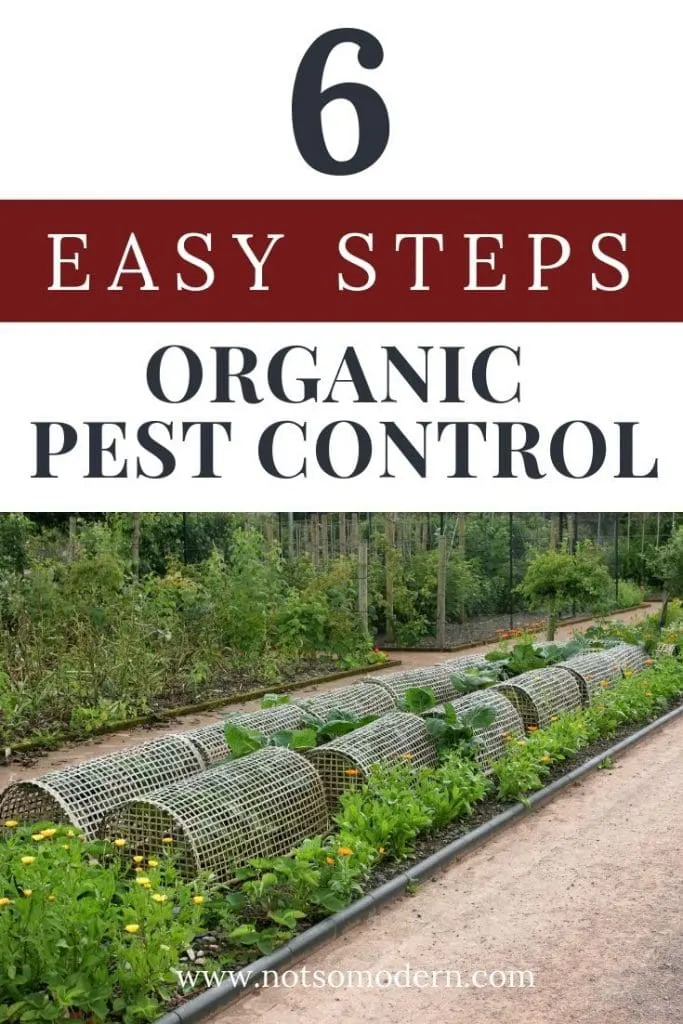
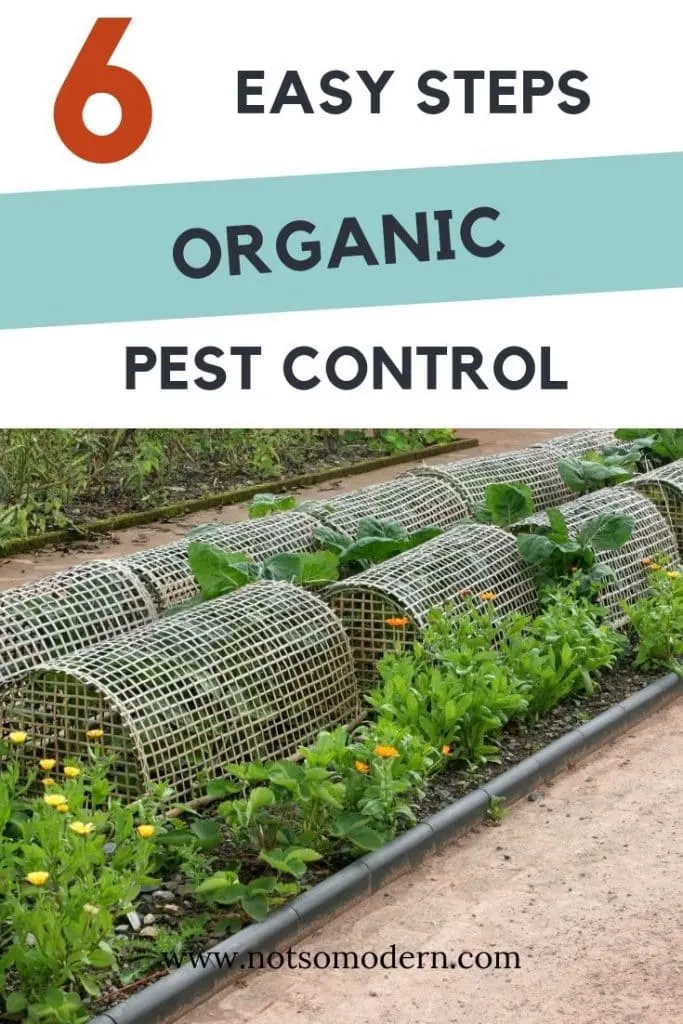
Leave a comment